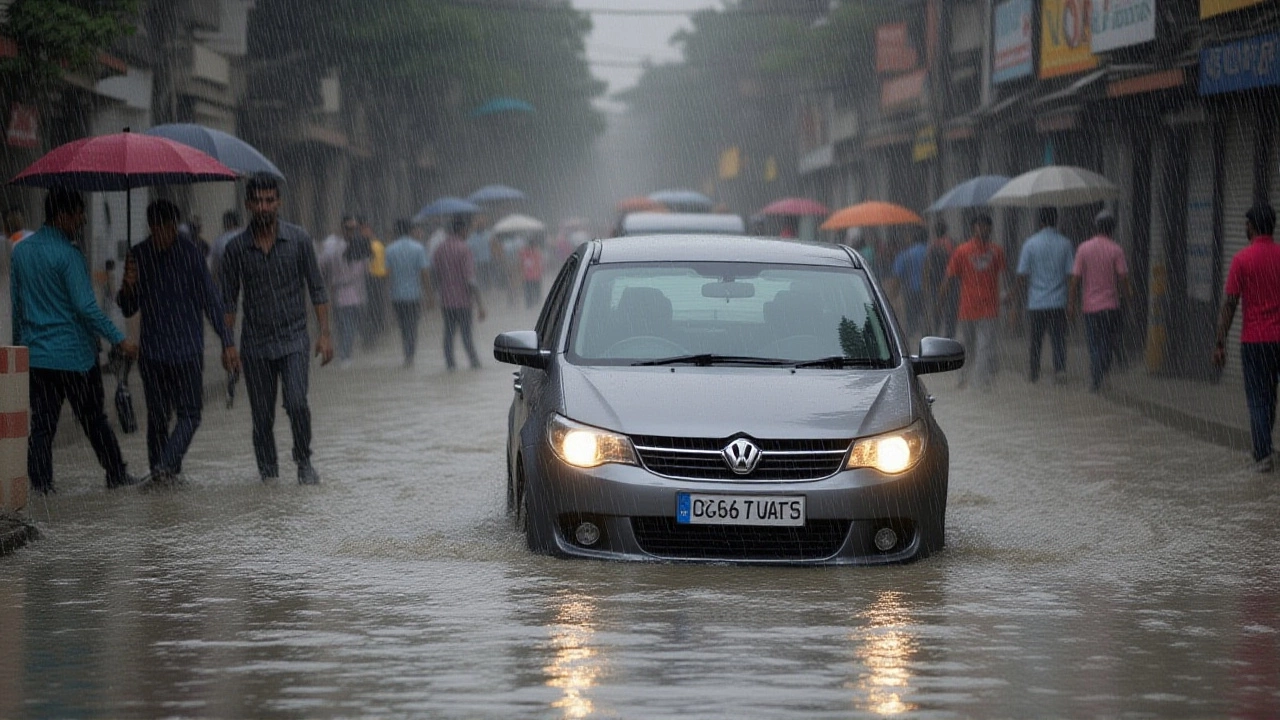Maharashtra Heavy Rain: What’s Happening and How to Stay Safe
Monsoon season in Maharashtra can turn the sky into a wild water show. When the clouds open up, streets flood, power cuts happen, and daily life gets a major shake‑up. If you’re living in or visiting the state, knowing what’s going on and how to react can save a lot of hassle.
First off, keep an eye on the local weather bulletins. The India Meteorological Department (IMD) posts rain forecasts every few hours, and most smartphone weather apps pull the same data. When the forecast shows “heavy rain for 24‑48 hours,” treat it like a warning sign rather than a suggestion.
What Heavy Rain Means for Your Area
Heavy rain isn’t just a splash. In coastal districts like Raigad and Ratnagiri, it can raise sea levels and cause coastal erosion. Inland, the Sahyadri hills dump water onto valleys, filling rivers like the Godavari, Krishna and Tapi. When those rivers rise quickly, low‑lying neighborhoods can see water up to waist‑deep in minutes.
Urban zones such as Mumbai and Pune suffer from clogged drains. If the city’s storm‑water system can’t keep up, water pools on roads, blocks traffic and creates slippery spots for two‑wheelers. That’s why many commuters report traffic snarls lasting hours after a downpour.
A side effect many forget is the rise in water‑borne diseases. Stagnant water becomes a breeding ground for mosquitoes, and people who wade through floodwater risk infections like leptospirosis. Simple steps—like wearing waterproof shoes and washing hands after any contact with flood water—cut the risk dramatically.
Practical Tips to Stay Safe During Heavy Rain
1. Plan Your Travel: If possible, postpone non‑essential trips. If you must go out, choose routes that stay on higher ground and avoid known flood‑prone spots. Keep a charged phone and a power bank handy.
2. Secure Your Home: Move valuable items off the floor, close windows, and place sandbags around doors if water is expected to rise. Turn off electrical appliances that could get wet.
3. Emergency Kit: Have a small kit ready—flashlight, batteries, basic medicines, bottled water, and a few snacks. A waterproof container for important documents is a smart addition.
4. Stay Informed: Follow official channels like the Maharashtra State Disaster Management Authority (MSDMA) on social media. They post real‑time alerts, evacuation routes, and relief center locations.
5. Help Neighbors: If you’re able, check on elderly or disabled neighbors. A quick phone call or a brief visit can make a big difference, especially if they need assistance moving belongings to higher ground.
Remember, heavy rain can surprise you. Even if the forecast looks clear later in the week, a sudden thunderstorm can dump a month’s worth of rain in an hour. That’s why staying alert and prepared is the best defense.
In the end, heavy rain is part of Maharashtra’s climate, but it doesn’t have to turn your life upside down. By watching the sky, protecting your home, and keeping a simple emergency kit, you can ride out the storm with minimal stress. Stay safe, stay dry, and let the rains pass without causing more trouble than necessary.

Maharashtra Heavy Rain Alert: Red Warnings for Mumbai, Thane, Raigad and Palghar
The India Meteorological Department has placed red alerts over Mumbai, Thane, Raigad and Palghar as unprecedented rainfall pounds Maharashtra. Mumbai alone logged 445 mm this September, far above the normal 380 mm. State officials have activated 24‑hour control rooms, deployed pumps and issued strict safety guidelines. Residents are urged to avoid flood‑prone zones, stay away from trees during thunderstorms and heed official updates. The warning will stay in force until Monday morning, with a gradual easing expected in October.
More Detail